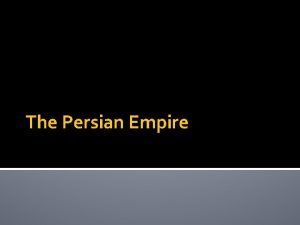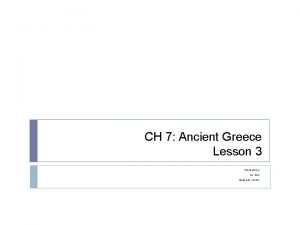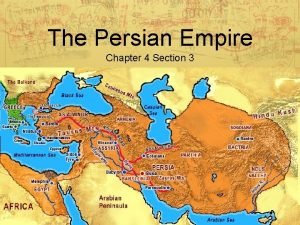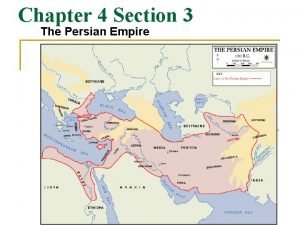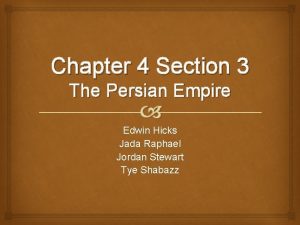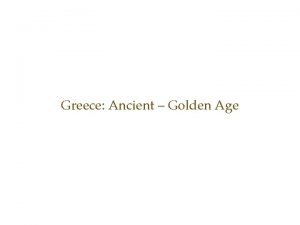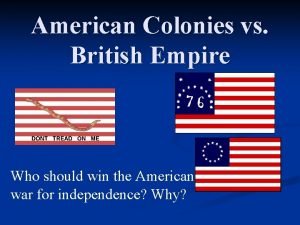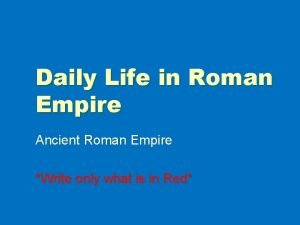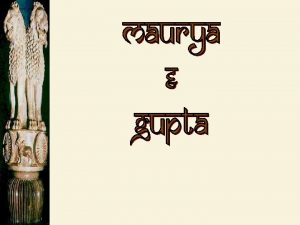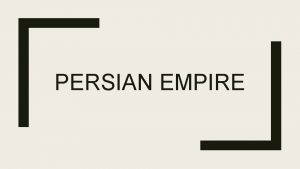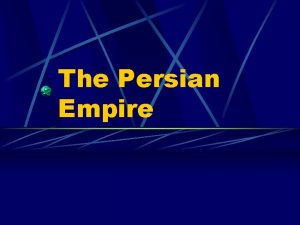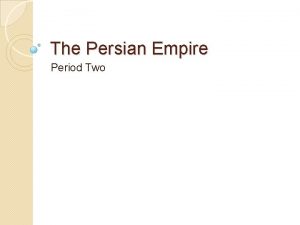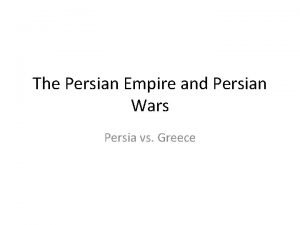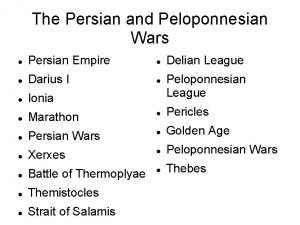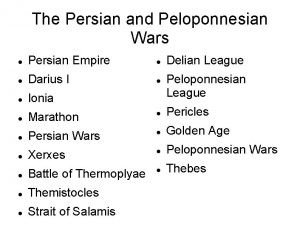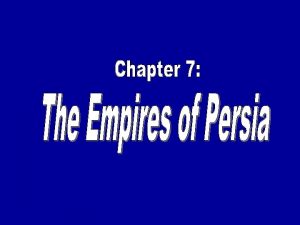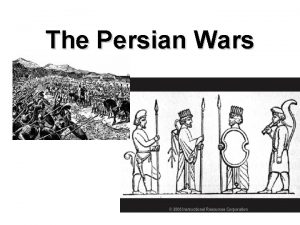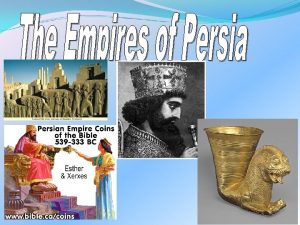THE PERSIAN EMPIRE In this lesson students will













- Slides: 13

THE PERSIAN EMPIRE In this lesson, students will identify characteristics of the Persian Empire. Students will be able to define and/of identify the following terms: Empire / Persians Provinces/ Satrap Royal Road Zoroastrianism/ Zoroaster V. Oliver

The Persians built a vast empire. V. Oliver

What is an Empire? • An empire is a state that rules over several different cultures. • The Persians were early empire builders. • They conquered neighboring cultures. • The Persians lived in present-day Iran. V. Oliver

Iran is a country in Southwest Asia is called the Middle East. V. Oliver

Social Honored local customs and religions Honored all in their empire but Satraps rule provinces Speak various languages Strong Military Conquered people like leadership of Cyrus & Darius. V. Oliver

Political : Leaders • Cyrus ( 2, 3 ) – fair to those he took over; honored local customs; wisdom and kindness • Cambyses – conquered Egypt & destroyed a lot; people did not like very much • Darius ( 5, 6) – Ten Thousand Immortals; efficient and well organized administration; took over areas east up to India; divided empire into 20 provinces V. Oliver

Ruling a Vast Empire : Political • (4) At the height of the Persian Empire, the Persians ruled a territory that stretched from the Nile River to the Indus River. • (5) To rule such a vast empire, the Persians divided their empire into provinces. • Satrap(6) Each province was ruled by a local official loyal to the Persians. V. Oliver

Economics The Persians built roads to connect their vast empire. Trade Routes / Relay Stations V. Oliver

Persian Coins Standard Money Promotes Economic Trade Tribute/ Taxes were a payment from one ruler to another ruler. Paying Tribute/ Tax a way to acknowledge the superior ruler. V. Oliver

Zoroastrianism : Culture • (7, 8, 9) The Persians were polytheistic until Zoroaster started a new religion in about 600 B. C. • (10) Zoroaster taught that there were two forces in the world: a force of good - Light and a force of evil - Dark. • (11, 12) People were free to choose which force to follow but they would be rewarded or punished in the afterlife. V. Oliver

Zoroastrians believe that fire is a symbol of their God. V. Oliver

Cult of Milthra Respected other cultures Specific dress for warriors Zoroaster taught that the world is a battle between the God of good, Ahura Mazda, and the force of evil. V. Oliver

Questions for Reflection/ Processing: • Define empire. • Where did the Persians live? • What lands were conquered by the Persians? • Why did the Persians build roads? • Why did the Persians divide their empire into provinces? • What do Zoroastrians believe? V. Oliver
 Rise of the persian empire
Rise of the persian empire How did persian rulers unite their vast empire?
How did persian rulers unite their vast empire? How did cyrus treat the people he conquered
How did cyrus treat the people he conquered How did cyrus treat the people he conquered
How did cyrus treat the people he conquered Chapter 4 section 3 guided reading the persian empire
Chapter 4 section 3 guided reading the persian empire Persian empire trade routes
Persian empire trade routes Chapter 4 section 3 the persian empire
Chapter 4 section 3 the persian empire Persian empire primary sources
Persian empire primary sources Persian empire golden age
Persian empire golden age American empire vs british empire
American empire vs british empire Roman empire family life
Roman empire family life Mauryan empire and gupta empire venn diagram
Mauryan empire and gupta empire venn diagram How jose become the champion of filipino student?
How jose become the champion of filipino student? How did darius i change persia's political organization?
How did darius i change persia's political organization?
